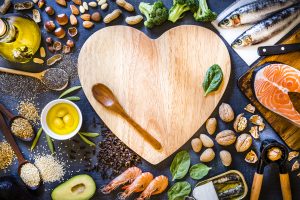The importance of prebiotics and probiotics
Published July 5, 2023
What do probiotics and prebiotics do?
While they sound very similar and are often confused, prebiotics and probiotics are not the same. They both play a role in creating a healthy microbiota in the gut, supporting your overall health and wellbeing.
Every human being has anywhere between 10 trillion and 100 trillion microbial cells in the body that all work together to keep you healthy (microbiota).[1] A healthy microbiota is needed to produce nutrients for your body and support your immune system. So understanding what prebiotics and probiotics are, what they do and how to get them in your diet will help you take care of the tiny microbes that take care of you.
What’s the difference between a probiotic and a prebiotic?
Probiotics — beneficial bacteria
Probiotics are types of ‘living’ friendly bacteria found in foods. When consumed in adequate amounts, they are beneficial to your health.[2]
Probiotics are naturally found in cultured or fermented foods including: [3]
- Dairy — Fermented dairy products include yoghurt, frozen yoghurt, aged cheese, kefir and buttermilk look for products containing live cultures
- Fermented vegetables — Fermented vegetables include sauerkraut and kimchi.
- Fermented soybeans — Miso and tempeh are fermented products made by soybeans
- Fermented drinks — Many fermented drinks are now available, including kombucha and non-dairy kefir drinks such as coconut kefir.
Probiotic bacteria can help protect you from food poisoning, improve digestion, and reduce symptoms associated with food allergies. Some probiotic strains help prevent dental caries and others are natural producers of B vitamins. Probiotics also enhance the absorption of vitamins and minerals and stimulate the production of enzymes in the body.2
There are many different types of probiotics and each behaves a little differently. You might be familiar with lactobacillus acidophilus and bifidobacterium lactis, which are often found in yoghurt.
Prebiotics — helping probiotics help you
Prebiotics are ‘non‐living’ food ingredients that reach the large intestine unaffected by digestion, and promote good bacteria in your gut, helping them grow and flourish.[4]
Many everyday foods contain beneficial prebiotics. These include:2
- Vegetables — Vegetables such as tomatoes, asparagus, artichokes, green vegetables, chicory root, garlic & onions. These vegetables contain inulin and fructooligosaccharides (FOS) which are prebiotics that ferment in the large intestine and support gut health.
- Fruit — Bananas and berries contain a prebiotic known as inulin
- Legumes — Pulses such as chickpeas, lentils and kidney beans contain resistant starch which is a type of prebiotic fibre
- Grains — Oats & barley contain beta-glucan and resistant starch with many bioactive properties. Wheat contains fructans and a particular type of fibre call arabinoxylans which have prebiotic properties.
- Seeds — Linseeds (or flaxseeds) contain cellulose and lignans which have many health benefits.
Having a combination of prebiotic and probiotic-rich foods can help our bodies maintain a healthy balance of good bacteria and support health and wellbeing. Combining them creates what is known as synbiotic foods. Try these examples:
- Breakfast — Add some banana slices to your yoghurt (make sure you buy yoghurt with certified live cultures).
- Lunch — Enjoy a wholegrain bread roll with green leafy vegetables topped with sauerkraut. Add the meat of your choice if you want to increase the protein. You’ll get probiotics from the sauerkraut and prebiotics from the wholegrain bun and the leafy greens.
- Snacks — Wholegrain seeded crackers (look for crackers with added linseeds) topped with Gouda cheese or a warm miso soup or edamame (soybeans).
- Dinner — A delicious tempeh stir fry served along with onions, garlic and asparagus will be rich in prebiotics, and the fermented tempeh is a source of probiotics.
We all know our diet influences our health, and now we have a deeper understanding of how our diet influences our microbiota. Having the right balance of good bacteria is essential to our wellbeing. Nourishing your good bacteria by combining prebiotic and probiotic foods benefits your whole body, helping you stay healthy, happy and vital.
MAT-AU-2301369
[1] Gut microbiota: Definition, importance, and medical uses [Internet]. Medicalnewstoday.com. 2021 [cited 8 February 2021]. Available from: https://www.medicalnewstoday.com/articles/307998#what-are-the-human-microbiota-and-microbiome
[2] Markowiak, Paulina, and Katarzyna Śliżewska. “Effects of Probiotics, Prebiotics, and Synbiotics on Human Health.” Nutrients vol. 9,9 1021. 15 Sep. 2017
[3] Rezac S, Kok C, Heermann M, Hutkins R. Fermented Foods as a Dietary Source of Live Organisms. Frontiers in Microbiology. 2018;9.
[4] PennState Extension. 2016. Creating Health & Nutrition, Prebiotics: How to Feed Your Good Bacteria [Internet], Available from https://extension.psu.edu/prebiotics-how-to-feed-your-good-bacteria
Learn about which Cenovis product may be appropriate for you.
SEE THE PRODUCTS HERE










